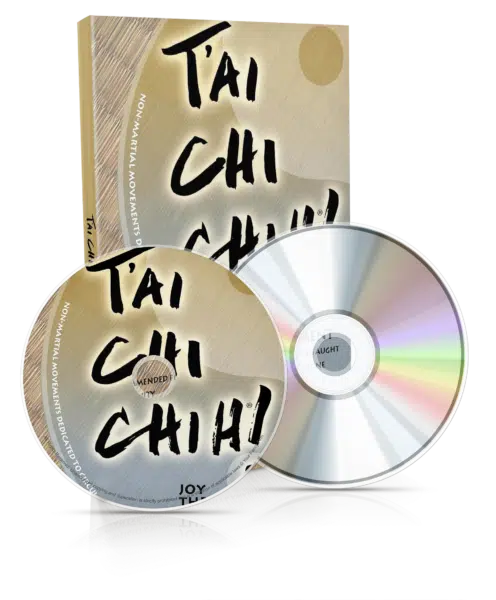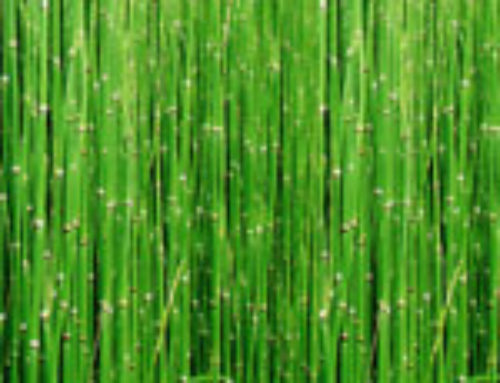Benefits of TCC Practice Seem Endless
A newspaper in Albuquerque, NM here interviews Justin Stone, the originator of TCC, then nearly 90 years old. Among the sometimes-surprising health benefits TCC practitioners recount, this article also includes the story of a mother’s problem pregnancy and how TCC helped.
“T’ai Chi Chih Practitioners Believe Balance of Energy Means Balance of Health”
By Rick Nathanson
Albuquerque Journal, July 28, 2005
(The article is available online here.)
Judy Hendricks won the lottery. She was 35 years old and six months’ pregnant when her water broke. She was admitted to a local hospital, where doctors told her that 80 percent of women in this situation will deliver their babies within 48 hours. They also told her that babies delivered so early in pregnancy have only a 60 percent chance of survival, “and the ones who do survive are often born with health problems,” she recalled.
Hendricks remained upbeat despite the dreary prognosis. She had been practicing T’ai Chi Chih for three years, and she continued to practice the slow, deliberate, graceful movements each morning in her hospital room.
Three weeks into her stay, the baby still had not arrived. Tests revealed that the rupture had resealed and the amniotic fluid had replenished itself.
“They couldn’t believe it,” said Hendricks, who was sent home, continued practicing T’ai Chi Chih, and delivered a full-term baby girl.
“When I entered the hospital, the neonatal specialist told me the chances of delivering a healthy baby were about as good as winning the lottery,” said Hendricks, 40, a cancer research scientist at Sandia National Laboratories.
Daughter Anastasia, now 5, has begun to learn T’ai Chi Chih (pronounced Tie-Chee-Chuh).
And so can anybody.
The 20th annual T’ai Chi Chih Teachers Conference will be held in Albuquerque— the birthplace of T’ai Chi Chih— from Aug. 4-7 at the Albuquerque Marriott. It is expected to attract more than 170 teachers from across the U.S. and around the world.
An open practice for all practitioners of the system, regardless of level, will be held Aug. 6, starting at 3:45 p.m. Interested observers are invited to attend the open session. It will also be a great opportunity to speak with Justin Stone, the 88-year-old founder of the system, which now has more than 2,000 certified teachers and more than 1 million practitioners worldwide.
The system began spreading rapidly in 1994, when local PBS affiliate KNME-TV produced a 13-part series on T’ai Chi Chih. The series aired on PBS stations around the nation and continues to air in reruns. Tapes and books on the system are now mailed to practitioners around the world.
‘Just do it’
T’ai Chi Chih differs from the more familiar system of traditional T’ai Chi Ch’uan, which has 108 movements and self defense applications. T’ai Chi Chih has only 19 movements done from one stance. “It is not a martial art, so it won’t help in a fight, but the vibration you develop from studying T’ai Chi Chih will keep you from getting in a fight,” said Stone. “It’s more of a moving meditation. When people ask me about it, I say ‘Just do it. Don’t talk about it. Don’t philosophize about it. Just do it.’ ”
Of course, you can’t totally get away from talking and philosophizing about Eastern concepts that are still foreign to the Western mind-set.
Practicing T’ai Chi Chih is about finding equilibrium between the two polarities of Yin and Yang— positive and negative, hot and cold, light and dark, male and female.
Once the Chi, the vital internal energy force, is balanced, it flows easily throughout the body. The mind, body and spirit become centered, and inner serenity, good health and vitality result, Stone said.
Physicians have long touted the health benefits of exercise, and now Tai Chi Chih in particular can cite a growing body of anecdotal as well as scientific studies to prove the point.
Letters received by Stone or addressed to the T’ai Chi Chih Center’s newsletter, Vital Force, from practitioners all over the world claim to have had their lives dramatically altered.
By practicing for about 30 minutes a day, people say they’ve been relieved of knee, back and hip pain. Headaches, migraines and insomnia have vanished. Stress and blood pressure levels have fallen. Mobility has returned to the arthritic, stamina to the asthmatic. Symptoms of depression, menopause, and anxiety disorders have been alleviated, and athletic performance and spirituality enhanced.
Scientific studies published by the University of California Neuropsychiatric Institute, the Journal of Gerontological Nursing and IDEA Health & Fitness Source magazine back up many of these claims.
“It changes peoples lives,” Stone said. T’ai Chi Chih is easy and it’s accessible. I call it ‘the effort of no effort.’ ”
Meet Justin Stone
Justin Federman Stone was always something of a Renaissance man. Born in Ohio, he studied music at Cornell University and subsequently had a career as a composer, arranger and keyboardist with big bands in the 1930s and ’40s. He served in the Army Air Corps during World War II and then worked as a broker on Wall Street in New York. He moved to Los Angeles in the 1950s where he hung out with counter-culture figures like Paul Rep, author of “Zen Flesh, Zen Bones,” among other works.
Always interested in Eastern arts and philosophies, Stone met T’ai Chi Ch’uan master Tin Chin Lee during a 1958 trip to Hawaii, and continued to study the art in California under master Wen-Shan Huang. He spent much of the 1960s traveling around Asia and India, soaking up all he could of the different cultures.
During a 1971 trip to Albuquerque to visit a friend, Stone wandered into a bookstore. The owner asked what he did and Stone gave voice to the first thing that popped into his head: “I said I teach T’ai Chi Ch’uan,” he recalled. That comment immediately generated so much interest from the owner and customers that classes were soon organized for Stone to lead.
One of his new students was a local book publisher who asked Stone to write about T’ai Chi Ch’uan. Because a definitive text on the subject had already been written by Huang, Stone was not keen on the idea. Huang, however, had shown Stone three movements that Stone modified and used as a warm-up. These were not part of the original 108 movements of T’ai Chi Ch’uan. The publisher then suggested Stone write about these instead.
“It was just a few movements, so there wasn’t much to write about, but then, over the course of the next week, movements just started coming to me along with their names,” Stone said. Those movements, “Bird Flaps its Wings,” “Around the Platter,” “Joyous Breath,” and more, became the basis for T’ai Chi Chih, along with additional movements that continued to come to him over the next few years.
While certified teachers of the system earn money from leading classes, Stone said he has never financially benefited from T’ai Chi Chih, which translates as “Supreme Ultimate Knowledge.” But there have been other benefits.
Stone’s hand shake is firm, he is sure on his feet, quick of wit and humor, and he possesses 20-25 eyesight. He continues to write music and he supports himself primarily by dabbling in the stock market and selling his own paintings.
And even if it sounds a bit corny, or even pretentious, Stone is completely earnest when he says that the spread of T’ai Chi Chih is about “service to mankind.”




